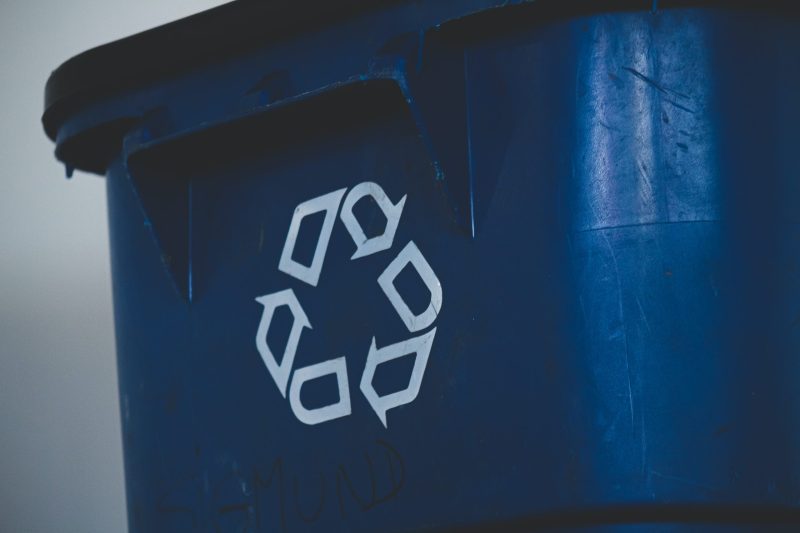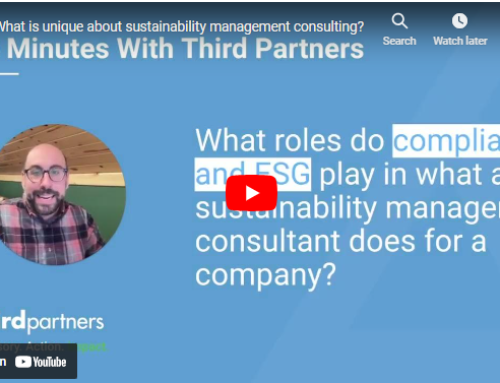In December 2022, the Federal Trade Commission (FTC) announced a review of its Guides for the Use of Environmental Marketing Claims, also known as the “Green Guides.” Now that the multi-month public comment period addressing carbon offsets, renewable energy, and recyclability recently closed, the FTC is expected to issue its updated guidance, or potential rulemaking, in 2023.
The FTC’s review of the Green Guides included a public panel on May 23. The panel helped examine the current state of U.S. recycling and identify the consumer’s perception of recycling-related marketing claims.
Third Partners participated so we could bring our partners insight into what’s coming down the pipeline and to help companies prepare as environmental marketing around recyclability gets a lot more complicated. Here’s what you need to know.
1. Recycling remains parochial and fragmented in the US, thanks to some 9,000 distinct community-operated recycling programs.
When asked if any materials are routinely accepted by all consumer recycling programs, expert panelists generally agreed that cans, bottles, jars, and fiber are generally collected by municipal programs, sorted and then sold to materials recovery facilities (MRFs). Once the materials are purchased, MRFs begin sorting, bundling, and selling the different material types to buyers for reprocessing.
Materials commonly accepted by municipal recycling programs & sold to MRFs |
|
|---|---|
| Glass |
|
| Metal |
|
| Fibrous Materials |
|
In its present form, Green Guides allow marketers to make unqualified recyclable claims when recycling facilities are accessible to the substantial majority of communities in which the product is sold. The threshold for the substantial majority is defined as 60% – for now. Expert commentators suggest that the FTC may increase the threshold of the substantial majority test. It’s imperative that you understand what this means for your business and your ability to market recycling-related environmental benefits claims.
2. Organizations need to look beyond consumers and municipal programs and consider MRFs and end markets.
The panelists generally agreed that simply determining whether or not your product or material can be collected by municipal programs is insufficient for validating recycling claims. Just because a specific material is collected by a municipal program doesn’t necessarily mean it will be reprocessed into a valuable product.
The dark blue boxes in the diagram above illustrate the range of scenarios where materials that are technically considered “recyclable” will ultimately just be landfilled or downcycled into lower value goods.
When is a material downcycled?
- A MRF may send materials to the landfill if they are contaminated, or if the facility’s distance from the end market buyers results in prohibitive transportation costs.
- One form of downcycling occurs when MRFs sell glass to landfills to use as solid cover. Whether or not “recycled glass” gets turned into a new product depends on the type of glass (amber, green, or clear/flint) and its proximity to reprocessors. Clear/flint glass is the most valuable glass in the US (especially on the East Coast), while green glass is reprocessed into wine bottles in California. However, amber glass is infrequently, if ever, reprocessed into new products in the US.
- Other materials do end up being reprocessed, but only to create easily-manufactured premium consumables. These items, such as pens, bracelets, and plastic water bottles have short-lived use phases, are relatively low value, and quickly reenter the waste stream.
- A final variety of downcycling involves specific materials. For example, most plastics undergo serious degradation during the reprocessing phase. This means they can only be reprocessed a limited number of times and will eventually end up in the landfill.
To many consumers and Non-Governmental Organizations (NGO), these scenarios point to something more like a slow, downward spiral to the landfill than “circularity.” In fact, 82% of people feel it’s dishonest for companies to claim that an item is recyclable if it cannot be made into a new product, even though they don’t necessarily expect an item to be made into the same product when it’s recycled.
What’s at stake here is a robust, working definition of “recyclable” and the environmental benefits it conveys. If you’re an environmental marketer, the moral of the story here is that you need to look beyond the collection phase to what happens with the materials in commodity end markets. It’s possible, perhaps even likely, that the FTC issues guidance on this issue, and your organization needs to take a hard look at whether or not you have the data to substantiate your environmental benefits claims.
3. Plastics and chemical recycling was the most debated topic the panel addressed.
Plastics recycling is a sticky issue given:
- The enormous quantity of plastic produced in the US.
- The variety of material types, forms, and shapes that impact whether or not municipal programs and MRFs will accept particular plastics.
- The enormous challenges in educating the consumer and changing their behavior.
Panelists agreed that types 1, 2, and 5 are the most commonly collected and reprocessed plastics.
Type 4 low-density polyethylene (LDPE) bags and films create a bigger challenge. Though sometimes recyclable at grocery stores or other drop-off locations, they aren’t usually accepted in curbside programs and are notoriously known to clog up the heavy machinery in MRFs. Not only does this shut down entire plants for hours or days, but it also puts workers in dangerous situations as they have to climb up the equipment with machetes to chop the plastic down and get things running again.
Some industry participants pointed to chemical recycling, otherwise known as advanced recycling or molecular recycling, as a potential solution for plastics recycling. Chemical recycling involves reducing plastics into their component molecules (a process called depolymerization) through pyrolysis or gasification. However, NGO participants pointed out numerous challenges to the idea that this is an environmentally beneficial process (or should even be referred to as recycling).
Chemical recycling is often used for fuel production, which critics believe should not count as environmentally beneficial. Even when chemical recycling is used to produce plastic, the environmental impact is sometimes (if not usually) worse than making virgin plastic from a lifecycle perspective.
Like mechanical recyclers, chemical recyclers also encounter challenges with feedstock purity. Films frequently bog down machines and there are issues with multi-layered plastics being pressed together and clogging up the process. Chemical recycling is suspect from a sustainability perspective and remains a brand risk.
4. If you want to lead, go beyond the status quo when it comes to materials selection, transparency, and the “substantial majority” test.
Consumer behavior studies are valuable for triangulating the customer use phase of your product’s environmental impact. For a rigorous understanding, however, you need to go one or two steps further to the recycling and commodities markets where circularity ultimately succeeds or fails. If you’re expanding into new markets, for instance, you may want to consider conducting a right-sized study to identify and substantiate legitimate environmental benefits claims.
But to become a leader in your industry and sector you need to do more. It’s what you manufacture and sell that ultimately makes or breaks your sustainability impact, and companies are increasingly being held accountable for using problematic materials, being unwilling to communicate transparently, and failing to invest the time and resources required to improve their environmental performance.
Contact us today if you want to assess opportunities for strategic product innovation, shore up your green marketing approach, or otherwise make progress on your sustainability goals and corporate ESG plan.




